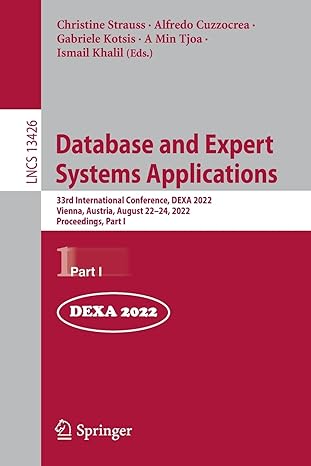Answered step by step
Verified Expert Solution
Question
1 Approved Answer
The following MIPS program defines an array of 10 elements in the data segment with these values: A = {11, 12, 10, 13, 9, 12,
The following MIPS program defines an array of 10 elements in the data segment with these values: A = {11, 12, 10, 13, 9, 12, 14, 15, 20}. It finds the maximum value of the array and calculates the summation of the array. What is the address that has been used by the simulator for this array? .data # Initialization of array theArray: .word 11, 12, -10, 13, 9, 12, 14, 15, -20 # intialization of phrases to console phrase: .asciiz "The maximum is " phrase2: .asciiz " The summation is " .text main: li $a2, 9 # a2 = 9 = array length la $t0, theArray # put address of array into $t0 # Print address of array # li $v0, 1 # load appropriate system call code into register $v0; # move $a0, $t0 # move integer to be printed into $a0: $a0 = $t0 # syscall # Print out phrase for FindMaxValue output li $v0, 4 # print_string $a0 = string la $a0, phrase # Print to console syscall # call operating system to perform print operation #Call FindMaxValue li $t1, 0 # t1 = 0: index i li $a1, 0 # a1 = 0 = maxVal j FindMaxValue # jump to FindMaxValue Exit: # Print maxVal li $v0, 1 # load appropriate system call code into register $v0; move $a0, $a1 # move integer to be printed into $a0: $a0 = $t6 syscall # Print out phrase for Summation output li $v0, 4 # print_string $a0 = string la $a0, phrase2 # Print to console syscall # call operating system to perform print operation # Call Summation li $t1, 0 # t1 restore back to 0 li $a1, 0 # a1 = 0 = sumVal j Summation Exit2: # Print sumVal li $v0, 1 # load appropriate system call code into register $v0; move $a0, $a1 # move integer to be printed into $a0: $a0 = $a1 syscall # Exit whole program li $v0, 10 # system call code for exit = 10 syscall # call operating sys FindMaxValue: beq $t1, $a2, Exit # Exit loop if t1 = arrayLen la $t0, theArray # put address of array into $t0 sll $t2, $t1, 2 # t2 = t1 * 4 add $t0, $t0, $t2 # t0 address of array[t2] lw $t3, 0($t0) # t3 = array[t2] li $t4, 1 # t4 = 1 slt $t5, $a1, $t3 # t5 = 1 if a1 < t3 addi $t1, $t1, 1 # Increment t1 by 1: i += 1 beq $t4, $t5, SetValue # jump if t4 = t5 j FindMaxValue SetValue: move $a1, $t3 # a1 = t3 j FindMaxValue # jump back to FindMaxValue Summation: beq $t1, $a2, Exit2 # Exit loop if t1 = arrayLen la $t0, theArray # Put address of array into $t0 sll $t2, $t1, 2 # t2 = t1 * 4 add $t0, $t0, $t2 # t0 address of array[t2] lw $t3, 0($t0) # t3 = array[t0] add $a1, $t3, $a1 # a1 = t3 + a1 addi $t1, $t1, 1 # t1 += 1 j Summation # Jump back to Summation to loop Step by Step Solution
There are 3 Steps involved in it
Step: 1

Get Instant Access to Expert-Tailored Solutions
See step-by-step solutions with expert insights and AI powered tools for academic success
Step: 2

Step: 3

Ace Your Homework with AI
Get the answers you need in no time with our AI-driven, step-by-step assistance
Get Started


